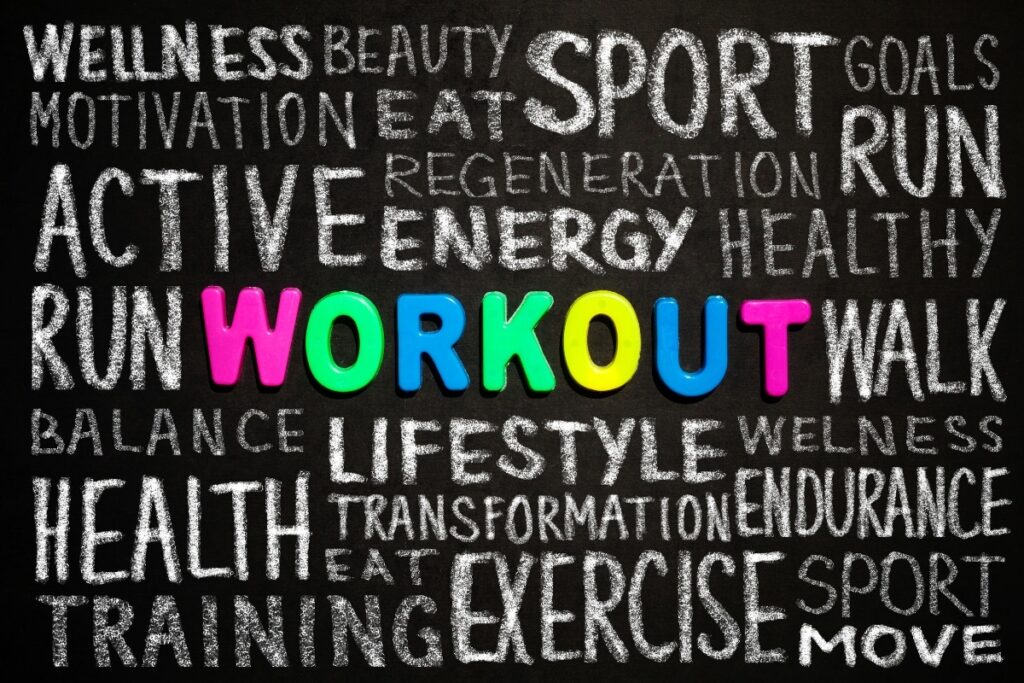Creating a workout that helps you reach your fitness goals can be overwhelming. Whether your goal is to build muscle and strength or burn stomach fat, having the right workout plan is essential. Your genetics, behavior, and environment will determine what kind of fitness plan works best for you, but certain fundamentals remain the same regardless of your needs.
The form and progressive overload must be considered when creating any workout routine to ensure that it will help you achieve the desired results. With this in mind, let’s look at how one might tailor training to their fitness goals.
How to Select Exercises for a Workout Plan
Creating a workout plan starts with selecting the right exercises. But first, evaluating your goals and understanding what exercises best help you reach them is essential.
For example, compound lifts such as bench presses, squats, and deadlifts should be included in your training routine to build muscle. These exercises target multiple major muscle groups at once, helping you to increase your strength and size.
On the other hand, if burning stomach fat is your goal, cardio exercises such as running or cycling should be included in your workout plan.
Building strength requires training that utilizes compound and isolation movements to target the major muscle groups. Compound exercises involve multiple muscles and joints, while isolation exercises focus on one specific muscle group.
How to Create Volume for a Customized Workout Plan
Regarding workout planning, volume is critical for reaching your fitness goals. Whether you’re looking to build muscle and strength or reduce body fat, the amount of work you do (volume) will determine your success in achieving your desired results. Volume is determined by the number of sets, reps, and exercises done during your training sessions.
The volume for building strength depends on your fitness level, but typically 3-5 sets of 4 -8 repetitions per workout with a few exercises are recommended. The volume can be slightly higher for those looking to build muscle with 4-6 sets of 8-12 reps and more activities in each training session. On the other hand, the volume for burning stomach fat is typically lower with 2-3 sets of 10-20 reps and various exercises.
Knowing the volume for your workout plan is just the start, though – you also need to consider periodization to ensure you’re progressing toward your fitness goals.
Use Progressive Overload to Individualize a Workout Plan
Progressive overload is essential to any workout program designed to help you reach your fitness goals. The gradual increase in stress on your muscles leads to increased strength and muscle building or fat burning. By increasing the intensity, duration, or frequency of your workout over time, more muscle fibers will be used, and more calories will be burned, leading to more significant gains.
When building strength and muscle, it’s important to use heavier weights over time and do more repetitions with each training session. You should also increase the number of sets you’re doing per workout, which will help you reach your goals more quickly.
For fat loss, you’ll want to focus on increasing your workout intensity, either by switching up the exercises you’re doing or increasing your training speed. Doing HIIT (High-Intensity Interval Training) can be a great way to accomplish this goal, as it will help increase your heart rate and burn more calories in less time.
Progressive overload is a great way to keep your workout program exciting and challenging regardless of your fitness goals. As you become more conditioned, gradually increase the intensity of your workout session so you can get closer to achieving the desired results.
Remember that consistency is critical in workout programs, as even small changes made over time can make a big difference. So keep challenging yourself, stay consistent with your workout schedule, and you’ll soon be closer to reaching your goals.
How to Use a Periodization Plan to Reach a Fitness Goal?
A periodization plan is composed of meso, macro, and micro cycles. A mesocycle is a 3 to 12-week cycle which focuses on building a particular workout pattern, while the macro-cycle is composed of multiple mesocycles and lasts up to 1 year. The micro-cycle is the workout routine within each mesocycle.
For example, if you wanted to build muscle, you would use a mesocycle of 6 weeks, where each workout focuses on hypertrophy and progressive overload. Within the 6-week cycle, you must ensure that the training is Tough Enough (TE) – it should challenge your body for progressive overload to occur. In addition, the workout should be done with good form and proper rest to work safely and efficiently.
Once a mesocycle is complete, the workout should go to the next level of hardness or difficulty. This is known as periodization. Periodization helps you reach your goal more quickly by allowing you to adapt to complex workout routines faster, rather than repeating the same training every day for weeks.
The Final Thoughts on How to Create a Workout Plan
Creating a workout plan can be daunting, but it doesn’t have to be. By understanding your goals and considering the critical components of form, progressive overload, volume, and periodization, you can craft an effective workout to help you reach your fitness objectives.
With thoughtful planning and dedication to sticking with your workout routine, there’s no limit to what you can achieve! So get out there and start reaching those goals – we know you can do it! If you love bodybuilding, share this article on Facebook or Twitter so that others can learn more about building muscle.




